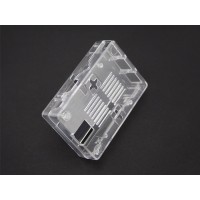Who wants pi? The Raspberry Pi has made quite a splash since it was first announced. The credit-card sized computer is capable of many of the things that your desktop PC does, like spreadsheets, word-processing and games. It also plays high-definition video. It can run several flavors of Linux and is being used to teach kids all over the world how to program.
The secret sauce that makes this computer so small and powerful is the Broadcom BCM2835, a System-on-Chip that contains an ARM1176JZFS with floating point, running at 700MHz, and a Videocore 4 GPU. The GPU provides Open GL ES 2.0, hardware-accelerated OpenVG, and 1080p30 H.264 high-profile decode and is capable of 1Gpixel/s, 1.5Gtexel/s or 24 GFLOPs of general purpose compute. What’s that all mean? It means that if you plug the Raspberry Pi into your HDTV, you could watch BluRay quality video, using H.264 at 40MBits/s.
But wait, there’s more. The new Model B+ also has a 10/100 Ethernet port so you can surf the web (or serve web pages) from right there on the Pi. The system volume no longer lives on an SD card but instead a microSD card, so it’s even easier to prepare, run and debug several different operating systems on the same hardware. This means no more large SD cards and no more deceptively difficult to handle adapters Most Linux distributions for the Pi will happily live on a 2GB microSD card but larger cards are supported.
The Model B+’s FOUR built-in USB ports provide enough connectivity for a mouse, keyboard, or anything else that you feel the RPi needs, but if you want to add even more you can still use a USB hub. It is recommended that you use a powered hub so as not to overtax the on-board voltage regulator. Powering the Raspberry Pi is easy, just plug any USB power supply into the micro-USB port. There’s no power button so the Pi will begin to boot as soon as power is applied, to turn it off simply remove power. The four built-in USB ports can even output up to 1.2A enabling you to connect more power hungry USB devices (This does require a 2Amp micro USB Power Supply).
On top of all that, the low-level peripherals on the Pi make it great for hardware hacking. The 0.1" spaced 40-pin GPIO header on the Pi gives you access to 26 GPIO, UART, I2C, SPI as well as 3.3 and 5V sources. The first 26 pins are identical to the Model B to provide 100% backward compatibility for your projects.
Dimensions
- 85mm x 56mm x 17mm
Features
- Broadcom BCM2835 SoC
- 700 MHz ARM1176JZF-S core CPU
- Broadcom VideoCore IV GPU
- 512 MB RAM
- 4 x USB2.0 Ports with up to 1.2A output
- Expanded 40-pin GPIO Header
- Video/Audio Out via 4-pole 3.5mm connector, HDMI, or Raw LCD (DSI)
- Storage: microSD
- 10/100 Ethernet (RJ45)
-
Low-Level Peripherals:
- 27 x GPIO
- UART
- I2C bus
- SPI bus with two chip selects
- +3.3V
- +5V
- Ground
- Power Requirements: 5V @ 600 mA via MicroUSB or GPIO Header
- Supports Debian GNU/Linux, Fedora, Arch Linux, RISC OS and More!
Documents












